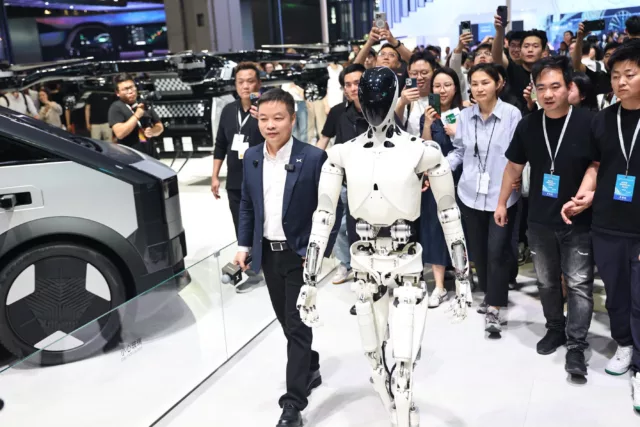
The 2025 Auto Shanghai show has featured new models and component systems introduced.
An automotive consultant said Monday there was one subject that wasn’t mentioned much but still had an impact on the show – the 145% U.S. tariffs on Chinese goods implemented by President Donald Trump.
“The tariffs weren’t talked about but there a cloud,” said Tu Le, founder and managing director of Sino Auto Insights, a Beijing-based consulting firm.
He was the speaker at an Automotive Press Association webinar on Monday. The consultant attended media days and trade days at the show last week. The show began April 23 and runs through Friday.
Le said auto dealers from Canada attended the show and expressed an interest in bringing in Chinese vehicles. The Trump administration is implementing tariffs on vehicles and components from Canada and Mexico. The tariffs will have an adverse impact on the North American auto industry, where supply chains crisscross borders.
The consultant said Chinese vehicle makers are “going to be welcomed quite a bit” to build factories in countries targeted by the Trump administration for tariffs. “It’s business as usual, just without the United States.”
He predicted the European Union “will probably want (Chinese) vehicles assembled in Europe.”
During the presentation, Le commented about other trends.
–Foreign automakers are adjusting their China operations to expansion by the home Chinese vehicle makers, led by BYD.
Foreign brands such as Honda Motor Co. and Toyota Motor Corp. “feel they have bottomed out” and “can be competitive,” he said.
Meanwhile, he said Hyundai and Kia face “a lot of headwinds” in China even though the brands perform strongly in other regions.
–The Chinese market is experiencing a proliferation of models and new brands.
Some automakers are creating new brands. For example, the traditional Audi brand, with its four rings, is becoming known as “Four Rings,” while a separate Audi brand, simply called “Audi” is being added.
The traditional Audi (with rings) had been known for being driven by Chinese government officials, Le said. The new Audi (without rings) is intended to reach out to other customers.
“Chinese feel better not to deal with the baggage” of existing brands, Le said. “It’s hard to keep up with the new vehicles and new brands.”
According to Le, the Shanghai show had eight halls for automakers and were the equivalent of 17 football fields long.









